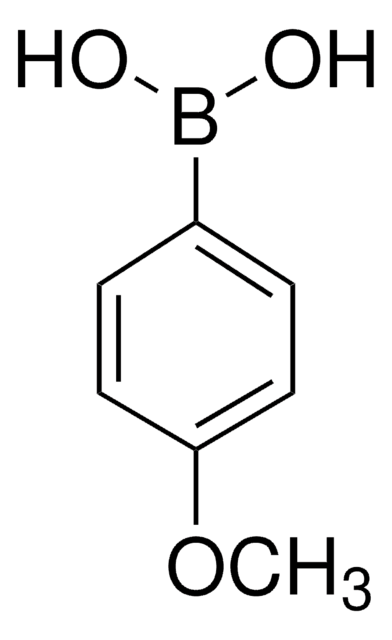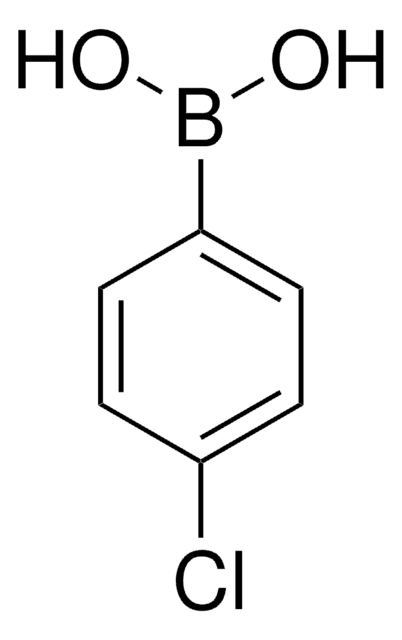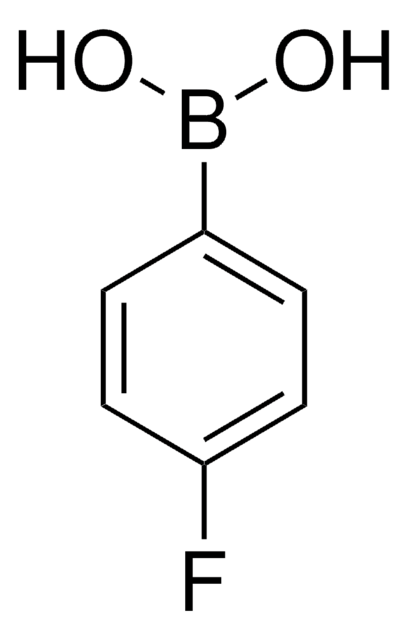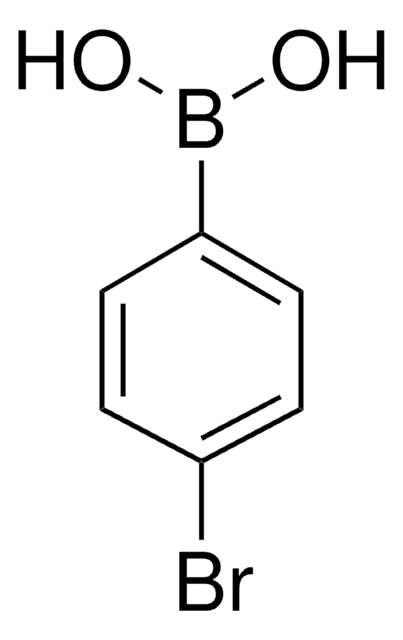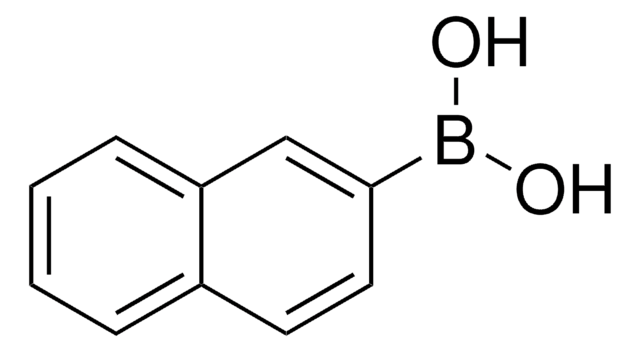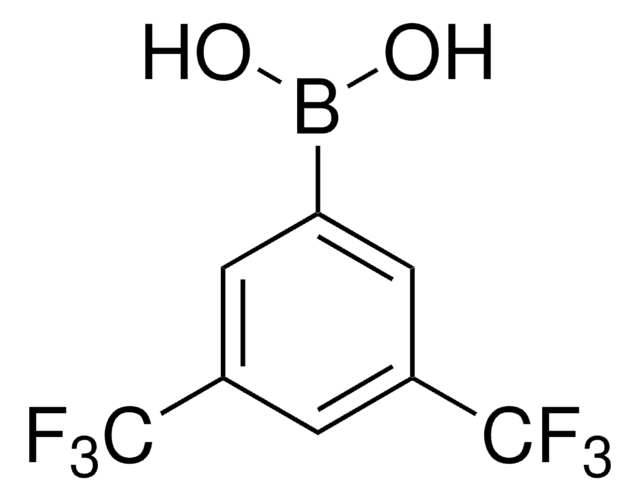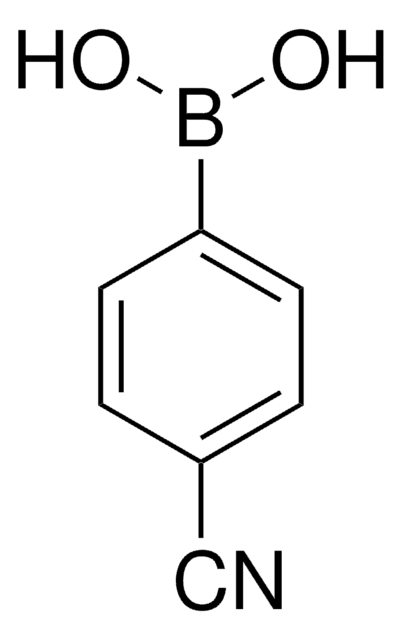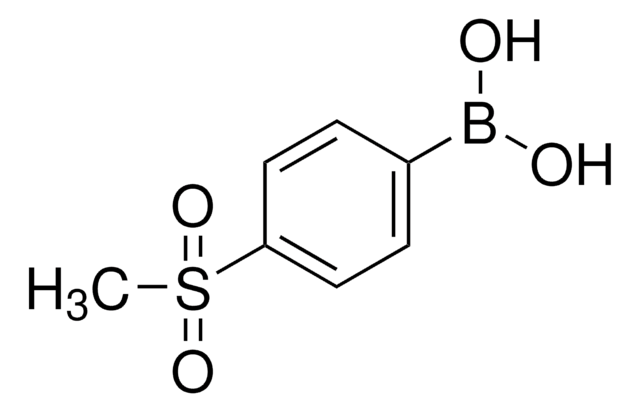439320
4-(Trifluoromethyl)phenylboronic acid
≥95.0%
Sinónimos:
α,α,α-Trifluoro-p-tolylboronic acid, 4-(Trifluoromethyl)benzeneboronic acid, [p-(Trifluoromethyl)phenyl]boronic acid
About This Item
Productos recomendados
Quality Level
assay
≥95.0%
mp
245-250 °C (lit.)
functional group
fluoro
SMILES string
OB(O)c1ccc(cc1)C(F)(F)F
InChI
1S/C7H6BF3O2/c9-7(10,11)5-1-3-6(4-2-5)8(12)13/h1-4,12-13H
InChI key
ALMFIOZYDASRRC-UHFFFAOYSA-N
¿Está buscando productos similares? Visita Guía de comparación de productos
Categorías relacionadas
Application
- Site-selective Suzuki-Miyaura cross-coupling reactions.
- Palladium-catalyzed direct arylation reactions.
- Tandem-type Pd(II)-catalyzed oxidative Heck reaction and intramolecular C-H amidation sequence.
- Ruthenium catalyzed direct arylation.
- Ligand-free copper-catalyzed coupling reactions.
- Amination and conjugate addition reactions.
- Regioselective arylation and alkynylation by Suzuki-Miyaura and Sonogashira cross-coupling reactions.
- Rhodium-catalyzed asymmetric 1,4-addition reactions.
- Copper-catalyzed nitration reactions.
- Regioselective Suzuki-Miyaura coupling and tandem palladium-catalyzed intramolecular aminocarbonylation and annulation.
- Palladium catalyzed allylation reaction with allyl alcohols.
- N-Arylation of imidazoles and amines in the presence of copper-exchanged fluorapatite as a catalyst.
It can also be used as a reactant to prepare:
- Thiazole derivatives for printable electronics.
- Terphenyl benzimidazoles as tubulin polymerization inhibitors.
- Aryl ketones by cross-coupling reaction with acid chlorides.
Other Notes
signalword
Warning
hcodes
Hazard Classifications
Acute Tox. 4 Oral
Storage Class
11 - Combustible Solids
wgk_germany
WGK 3
flash_point_f
Not applicable
flash_point_c
Not applicable
ppe
dust mask type N95 (US), Eyeshields, Gloves
Elija entre una de las versiones más recientes:
¿Ya tiene este producto?
Encuentre la documentación para los productos que ha comprado recientemente en la Biblioteca de documentos.
Los clientes también vieron
Nuestro equipo de científicos tiene experiencia en todas las áreas de investigación: Ciencias de la vida, Ciencia de los materiales, Síntesis química, Cromatografía, Analítica y muchas otras.
Póngase en contacto con el Servicio técnico